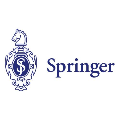The concept of intelligent reflecting surfaces (IRSs) is considered as a promising technology for increasing the efficiency of mobile wireless networks. This is achieved by employing a vast amount of low-cost individually adjustable passive reflect elements, that are able to apply changes to the reflected signal. To this end, the IRS makes the environment realtime controllable and can be adjusted to significantly increase the received signal quality at the users by passive beamsteering. However, the changes to the reflected signals have an effect on all users near the IRS, which makes it impossible to optimize the changes to positively influence every transmission, affected by the reflections. This results in some users not only experiencing better signal quality, but also an increase in received interference. To mitigate this negative side effect of the IRS, this paper utilizes the rate splitting (RS) technique, which enables the mitigation of interference within the network in such a way that it also mitigates the increased interference caused by the IRS. To investigate the effects on the overall power savings, that can be achieved by combining both techniques, we minimize the required transmit power, needed to satisfy per-user quality-of-service (QoS) constraints. Numerical results show the improved power savings, that can be gained by utilizing the IRS and the RS technique simultaneously. In fact, the concurrent use of both techniques yields power savings, which are beyond the cumulative power savings of using each technique separately.
翻译:智能反射表面的概念被认为是提高移动无线网络效率的有希望的技术,通过使用大量低成本个人可调整的可自行调整的被动反射元素来实现;为此,IRS使环境能够实时控制,并可以调整,以便通过被动信号使用户的接收信号质量大大提高;然而,对反映信号的变化对IRS附近的所有用户都产生影响,使得无法优化变化,积极影响受反射影响的每一个传输,这导致一些用户不仅有更好的信号质量,而且受到的干扰增加;为减轻IRS的这种负面副作用,IRS使环境能够实时控制,并可以调整,从而大大降低用户通过被动波射波使用户得到的信号质量质量;然而,对反映信号的信号的变化对IRS附近的所有用户都产生了影响,使得无法优化对受反射波影响的所有用户产生积极影响。 这不仅使一些用户不仅得到更好的信号质量,而且受到更多的干扰;为了减轻IRS的这种负面影响,本文使用利率的分差技术,从而减轻网络内干扰,从而减轻IRS造成的干扰。 为了调查对总体节能的影响,通过两种技术相结合,我们尽可能减少所需的传输能力,从而满足用户对内用户质量质量的干扰质量的干扰,而且增加干扰。




